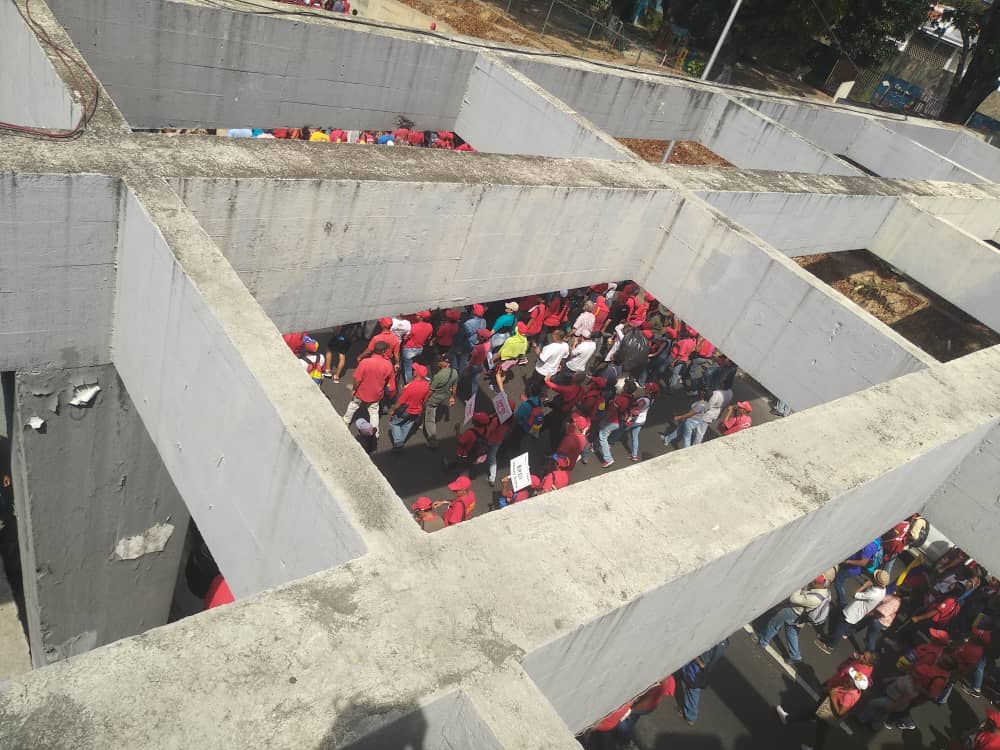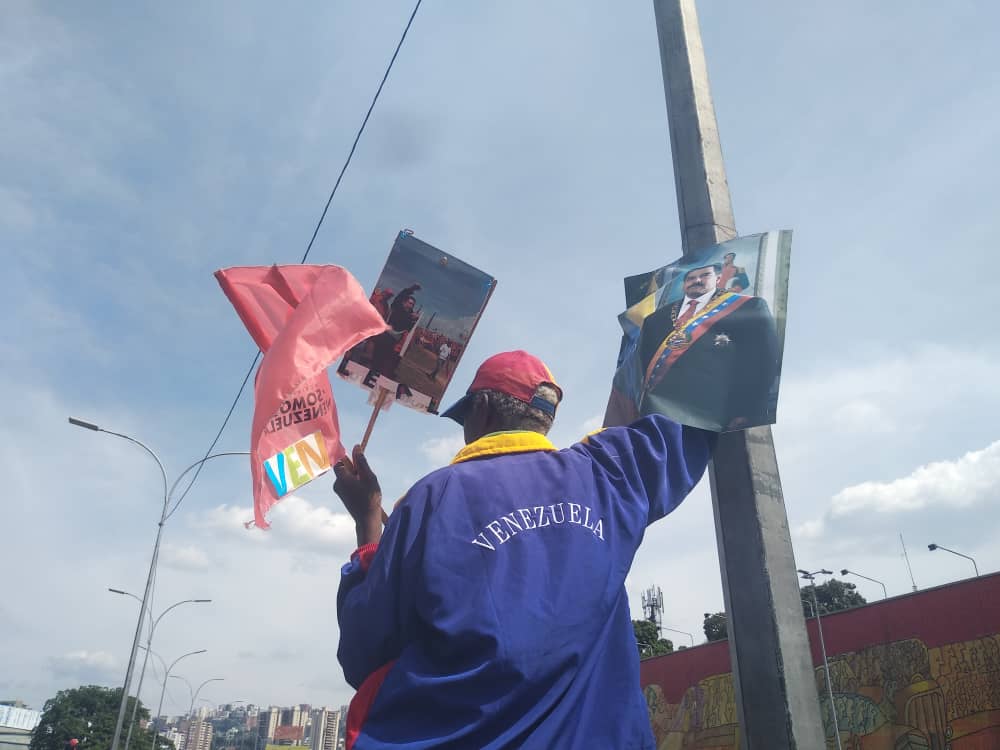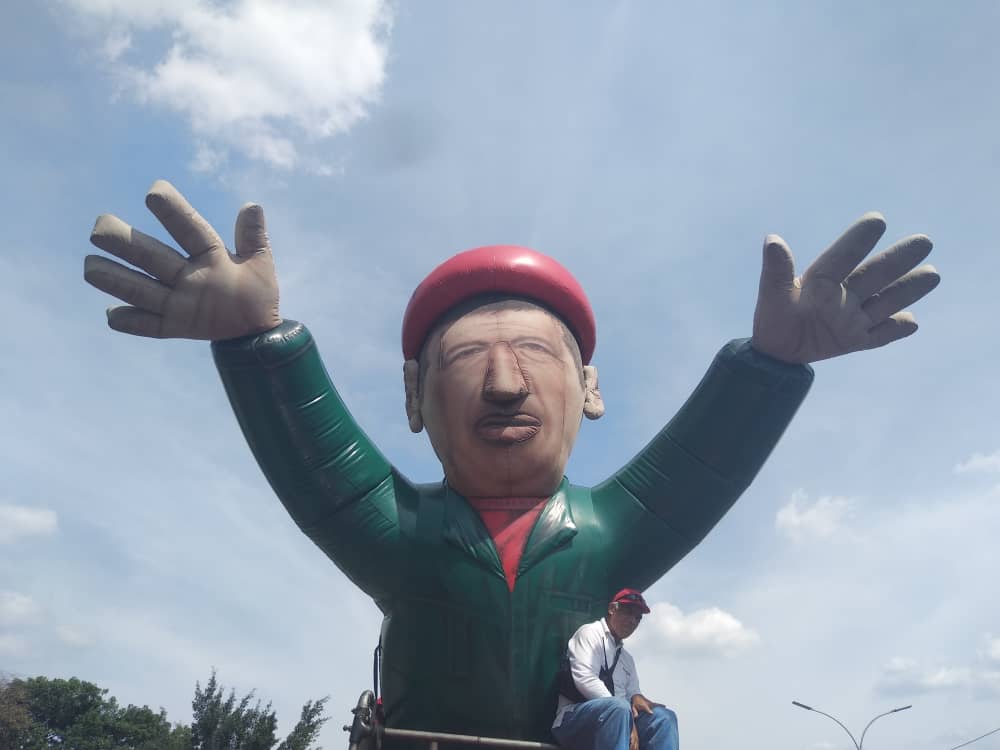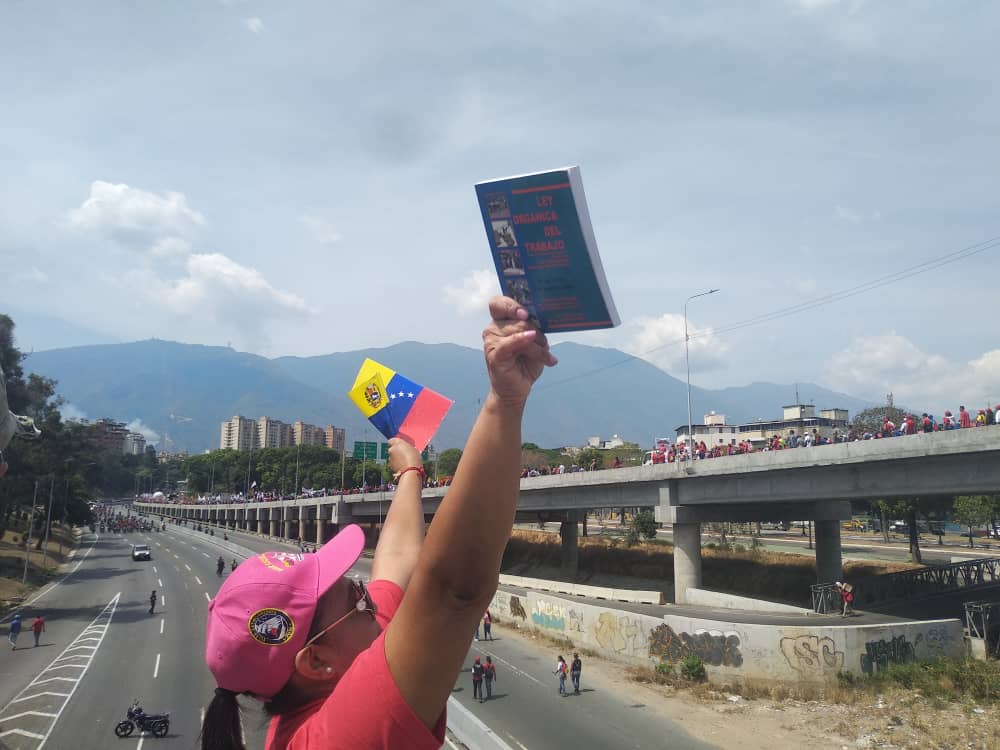48 Hours of Violent Protests Highlight Resilience
May 1st gave Caracas a crowded chavista march and a constellation of anti-regime protests severely repressed. Four young Venezuelans have been killed so far since Tuesday morning. The unrest, again, is nationwide and people look determined to resist.


Photos: Gabriela Mesones Rojo
While thousands gathered at Plaza Altamira to wait patiently for Guaidó, La Carlota resembled the landscape of 2017, when violent protests lashed the country for 134 days and repression took the lives of 165 protestors. Up until now, the protests of 2019 in Caracas had remained peaceful outside of repression in barrios at the hands of FAES. “Repression is back,” says an anonymous, masked protester affected by tear gas. “They don’t want us on the streets and they are shooting to kill. Yesterday felt like a war, and we know time makes them more violent.”
 La Carlota. Protestors affected by teargas at 11:00 am. “The GNB have been repressing since 10 am. At this point, we are just fighting to have a normal life. That’s all we want.”
La Carlota. Protestors affected by teargas at 11:00 am. “The GNB have been repressing since 10 am. At this point, we are just fighting to have a normal life. That’s all we want.”
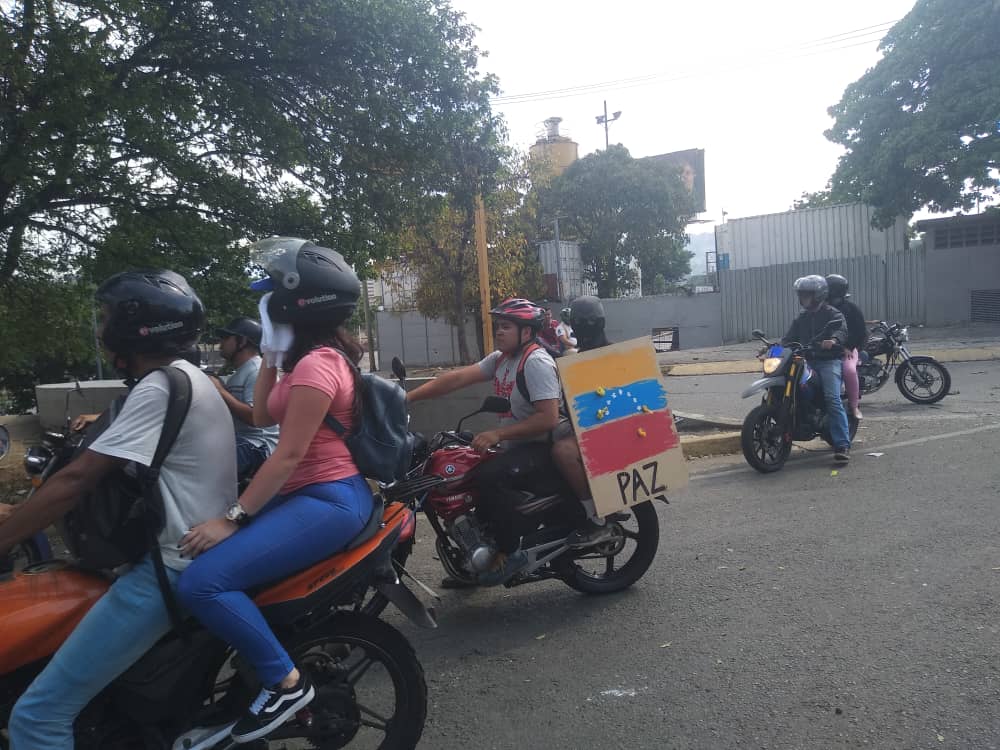 La Carlota. At the end of the afternoon repression was so fierce demonstrators had to protest on motorcycles to avoid the GNB bikes.
La Carlota. At the end of the afternoon repression was so fierce demonstrators had to protest on motorcycles to avoid the GNB bikes.
Since January 2019, The Venezuelan Observatory of Social Conflict has reported 55 deaths in the context of protests: 54 due to gunshot wounds, seven of which are underage victims, and five are female protestors. Bolivar State leads the death toll with 15 deaths, and then Caracas with ten. From April 30th to May 2nd, 11:00 a.m., there have been four confirmed deaths: Samuel Méndez (24), Jurubith Rausseo (27), Yoifre Hernández (14) and Yosner Graterol (16).
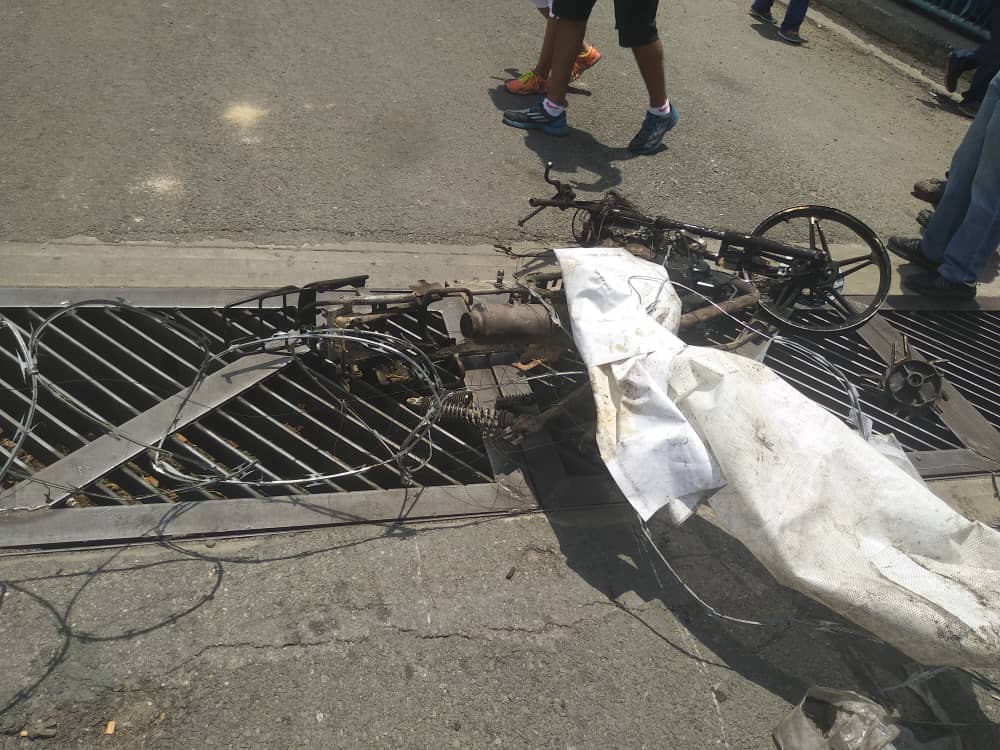 La Carlota. Guarimbas on La Carlota to slow GNB and FAES officers on bikes. “We need to block the road because guards and police have fast bikes. This way, they have to stop and shoot from the distance.” said an anonymous protestor who had been in La Carlota until 11:00pm the day before.
La Carlota. Guarimbas on La Carlota to slow GNB and FAES officers on bikes. “We need to block the road because guards and police have fast bikes. This way, they have to stop and shoot from the distance.” said an anonymous protestor who had been in La Carlota until 11:00pm the day before.
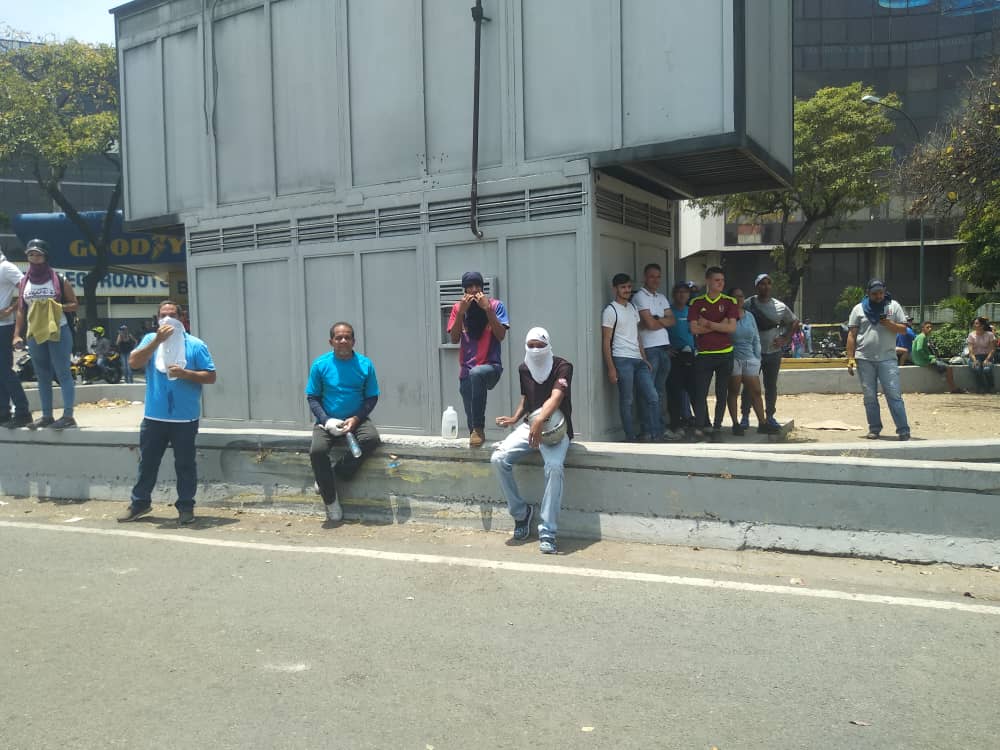 La Carlota. Protestors catch a breath after trying to enter La Carlota military base. “They shot at us with bullets and injured one of us. We only have rocks and bottles. They kill us without regret.”
La Carlota. Protestors catch a breath after trying to enter La Carlota military base. “They shot at us with bullets and injured one of us. We only have rocks and bottles. They kill us without regret.”
On Tuesday, April 30th, Juan Guaidó and Leopoldo López released a video from Altamira, near La Carlota airbase, standing with dissident soldiers armed with machine guns, calling people to join them “in the final phase of Operación Libertad.” The last time López was seen in the street was on another demonstration in February 2014, as GNB officers detained him. Quickly, thousands gathered around the airbase to show full support.
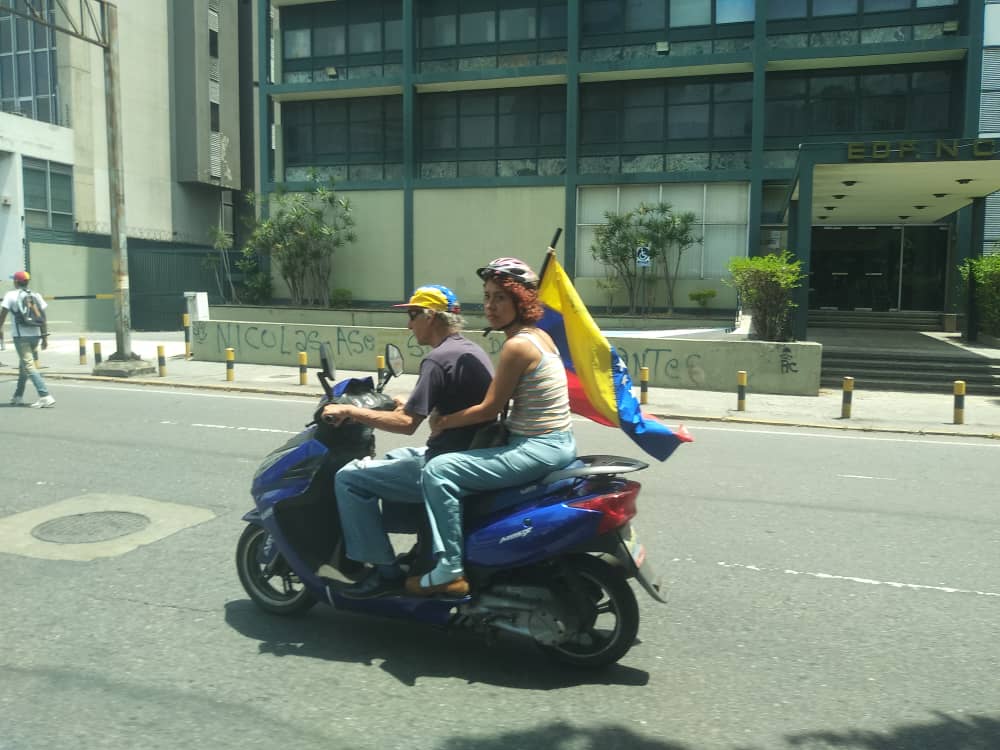 Bello Monte. Protestors managed to walk from Bello Monte to Altamira after being repressed in Santa Monica. “There is repression everywhere we go. They want to make our country smaller, but it’s bigger everyday. There’s room for everyone.” said Luisa, a 60 year old teacher who regrets her family’s migration, her useless salary, and lack of medice for her high blood pressure.
Bello Monte. Protestors managed to walk from Bello Monte to Altamira after being repressed in Santa Monica. “There is repression everywhere we go. They want to make our country smaller, but it’s bigger everyday. There’s room for everyone.” said Luisa, a 60 year old teacher who regrets her family’s migration, her useless salary, and lack of medice for her high blood pressure.
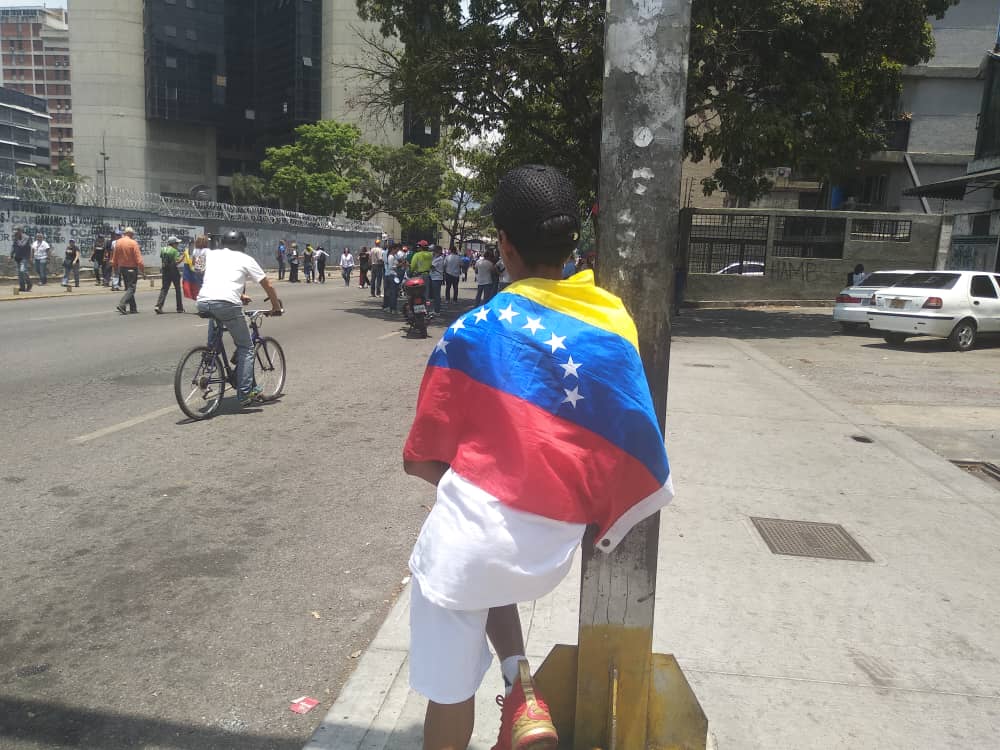 Altamira. A demonstrator looks at the fierce repression in La Carlota. “I can’t believe so many people still protest. They show no mercy, and people keep showing up. We want to get better so bad, we won’t stop until we get it.” said an anonymous underage protestor who wishes to be a mechanic.
Altamira. A demonstrator looks at the fierce repression in La Carlota. “I can’t believe so many people still protest. They show no mercy, and people keep showing up. We want to get better so bad, we won’t stop until we get it.” said an anonymous underage protestor who wishes to be a mechanic.
“We spent all day avoiding bullets from GNB officers and paramilitary groups roaming the area,” said Gabriel Burgos, Youth National Secretary from the party NUVIPA, who had to control his breath and cover his eyes as he spoke to reduce the effects of tear gas. “Caracas had 69 wounded and 119 arbitrary detained. Today is no different. There is already a dead person and four injured from gunshot wounds. People try to stand their ground, but repression is fierce.”
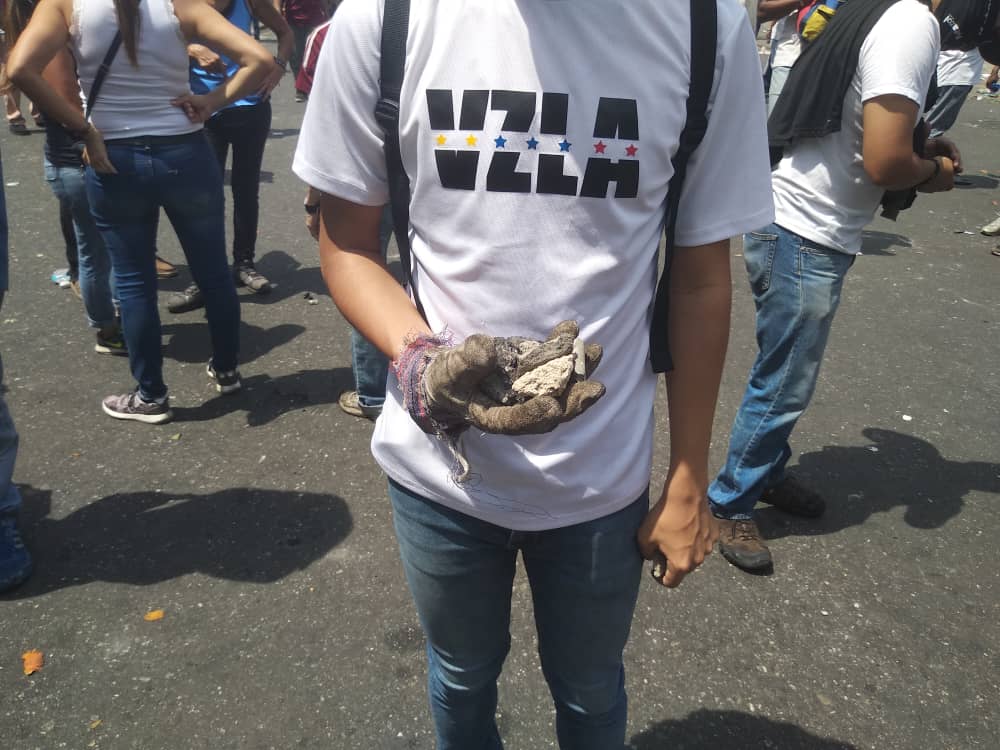 La Florida. “We are getting organized to strike back. PNB officers shot at us with rubber pallets and detained one of us. But we’ll stand our ground. It’s time for patience. The government has been working for 20 years for this moment, they won’t let go easy. But we’ll wait and fight all we have to.” said a hooded protestor who lead others to gather bottles, rocks and sticks to fight the police.
La Florida. “We are getting organized to strike back. PNB officers shot at us with rubber pallets and detained one of us. But we’ll stand our ground. It’s time for patience. The government has been working for 20 years for this moment, they won’t let go easy. But we’ll wait and fight all we have to.” said a hooded protestor who lead others to gather bottles, rocks and sticks to fight the police.
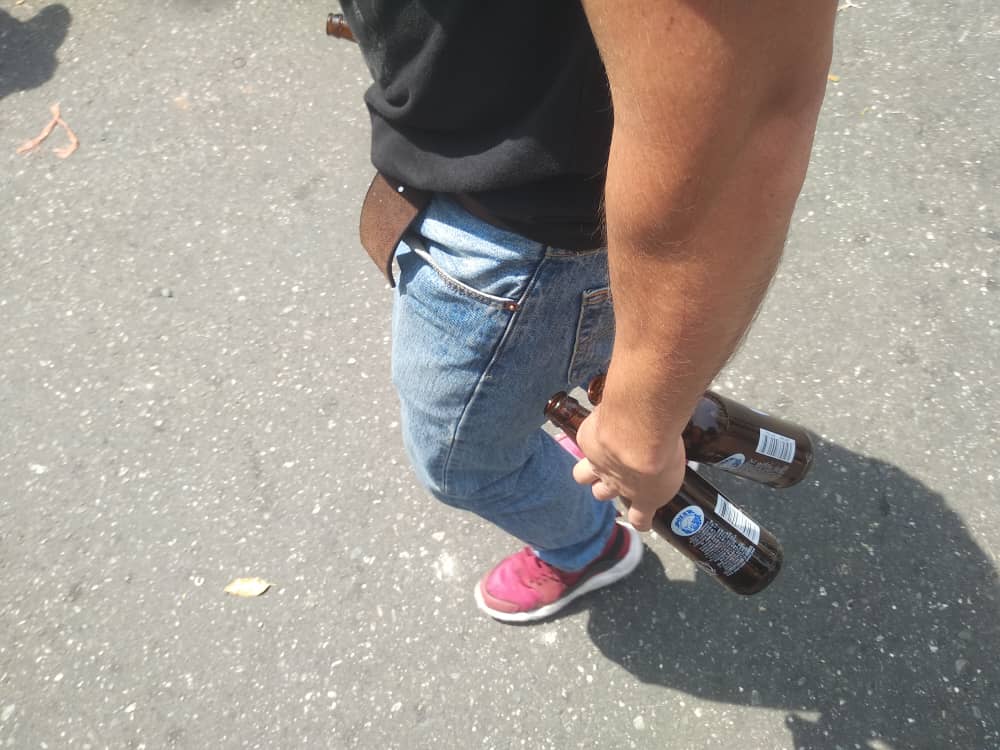 La Florida. “I don’t think violence is good or bad, it’s necessary. The police need violence to keep us down. We need it to rise.”
La Florida. “I don’t think violence is good or bad, it’s necessary. The police need violence to keep us down. We need it to rise.”
In La Florida, by 1:00 p.m., hooded protestors and neighbors from the area returned to the streets after being attacked by PNB officers with rubber pellets and tear gas. “We didn’t protest yesterday because we had to work, but today’s protest has been in my agenda for a while,” said another anonymous hooded protester, who held rocks and bottles for Molotov cocktails as he spoke, calmly. “This is the time for patience and resilience, the government has been working for 20 years to avoid this moment. But it will come, we will keep on protesting and we won’t get tired. It’s important to know that this will take time.”
Meanwhile, protesters from Santa Fe got stuck in the highway.
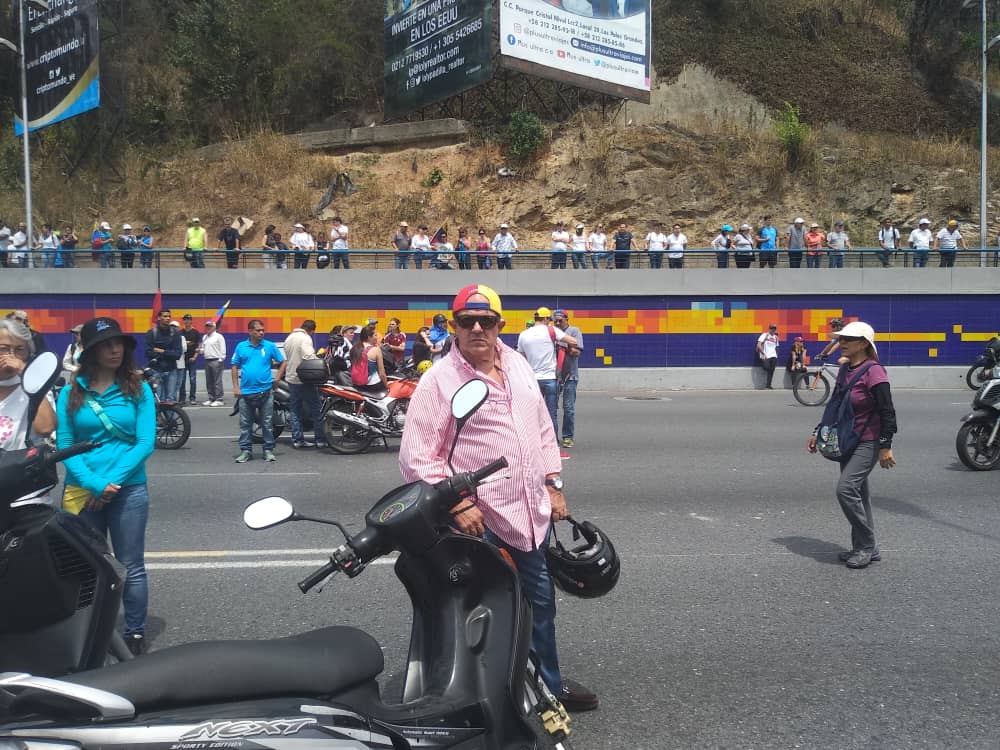 Santa Fe. “We have nothing else to do but wait. We have to be patient, change won’t happen in a day. It may seem stupid to wait here, but some people simply don’t know how to react to repression, so they do the peaceful thing, stand their ground and hope for the best.”
Santa Fe. “We have nothing else to do but wait. We have to be patient, change won’t happen in a day. It may seem stupid to wait here, but some people simply don’t know how to react to repression, so they do the peaceful thing, stand their ground and hope for the best.”
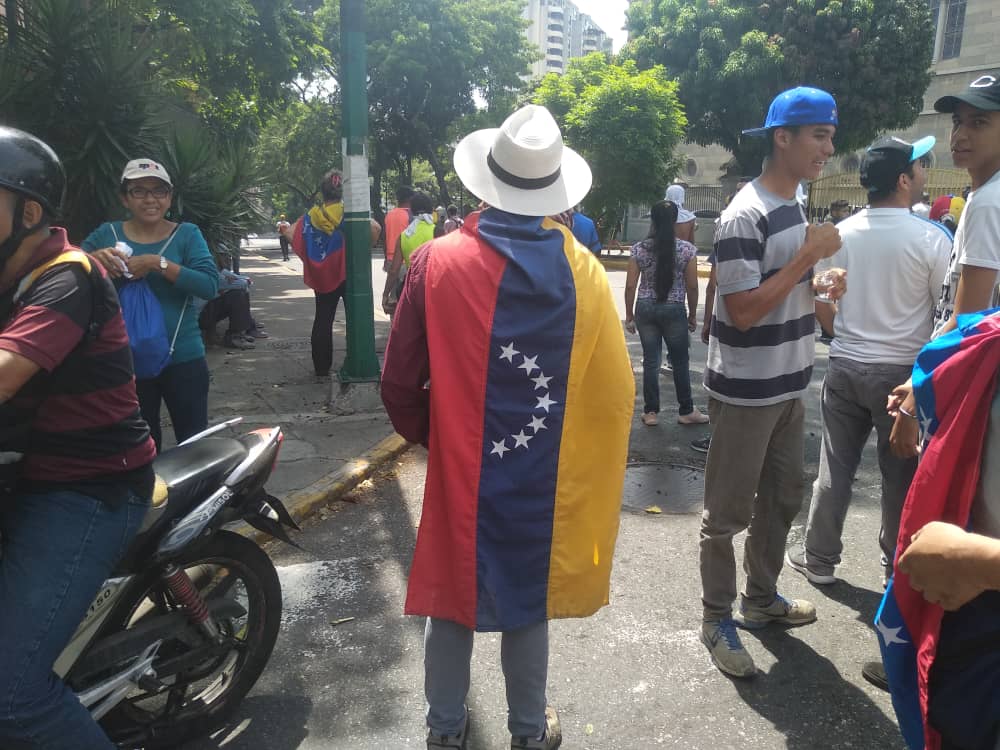 La Florida. “We hid in the church when the police came. But we came back out. We love our country. We’ll do anything to see it grow strong.”
La Florida. “We hid in the church when the police came. But we came back out. We love our country. We’ll do anything to see it grow strong.”
“They didn’t let us go to Altamira, now we’re stuck here isolated from the demonstration,” said a mototaxista who usually helps transport the wounded to a safe place during demonstrations. “We have nothing else to do but wait. We have to be patient, change won’t happen in a day. It may seem stupid to wait here, but some people simply don’t know how to react to repression, so they do the peaceful thing, stand their ground and hope for the best.”
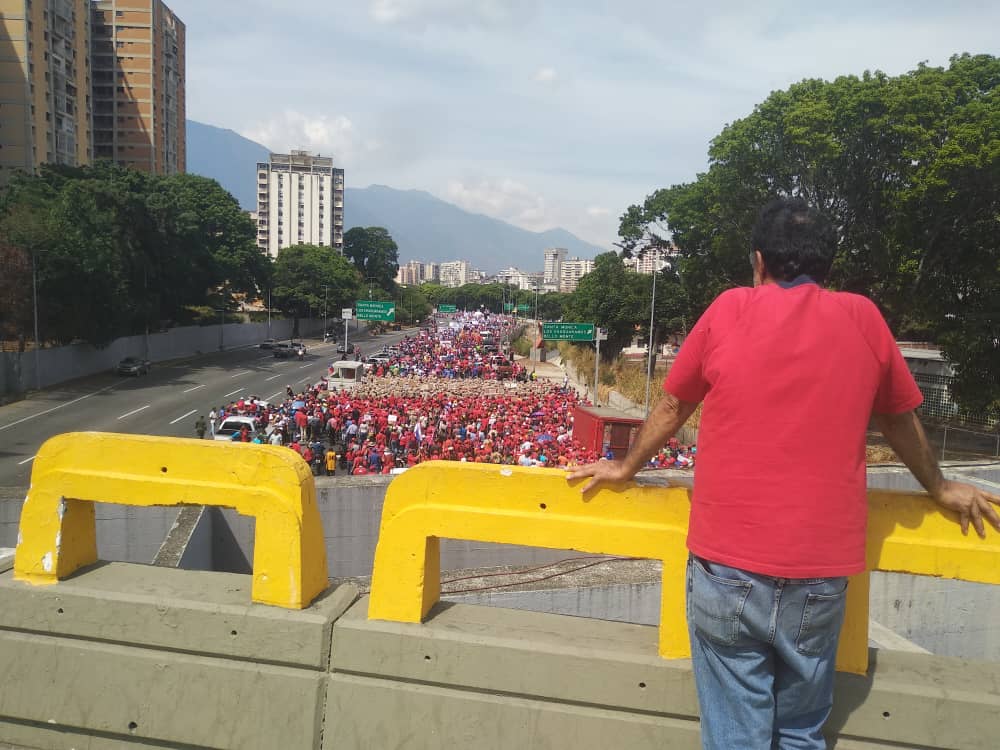 Valle-Coche. “Nicolás won the election, but the opposition expects to name Leopoldo López president. We would never vote for a guy that murdered homeless people with his own hands. We are a glorious country, and we will never be defeated.”
Valle-Coche. “Nicolás won the election, but the opposition expects to name Leopoldo López president. We would never vote for a guy that murdered homeless people with his own hands. We are a glorious country, and we will never be defeated.”
Plaza Venezuela. A lot of people gathered to celebrate chavismo’s march for Worker’s day. Though most of them are militia, public officials, and people from other regions who were payed to attend, many spoke from the heart when they spoke of Maduro’s many talents as a ruler and about his accurate position defending the country against the opposition.
On the other side of the city, the Valle-Coche highway hosted chavismo’s Workers’ Day march. A red river flowed towards Miraflores Palace in a boring march that has nothing to do with the lively passion chavista followers once expressed during their massive gatherings. At least 70 buses were parked in the highway, and loud music smothered chants. “Nicolás won the election, but the opposition expects to name Leopoldo López president. We would never vote for a guy that murdered homeless people with his own hands. We are a glorious country, and we will never be defeated,” expressed Ana, with a Venezuelan flag on one hand and the Constitution on the other. “We will not be lied to, we know what’s true and what isn’t.”
Caracas Chronicles is 100% reader-supported.
We’ve been able to hang on for 22 years in one of the craziest media landscapes in the world. We’ve seen different media outlets in Venezuela (and abroad) closing shop, something we’re looking to avoid at all costs. Your collaboration goes a long way in helping us weather the storm.
Donate


